With over five million inhabitants, Ankara is an essential destination on any tourist trip to Turkey. Although it is eclipsed in terms of beauty by Istanbul and Cappadocia, Ankara is the country’s historical, political and administrative capital, and has much to offer. Today it is a modern city looking towards the future, and offers visitors its most exotic, cosmopolitan and monumental face. Here, ancient tradition lives in harmony with modern progress.
What is there to see in Ankara? This great city offers a host of tourist attractions. We could begin our itinerary at the top of the ancient citadel — touring the narrow streets of the historic quarter, enjoying the impressive Museum of Anatolian Civilisations, and visiting the enormous Mausoleum of Ataturk, who is considered to be the father of the Turkish nation.
Context and history
Ankara is a city with a very long history. Testament to this are the many prehistoric settlements to be found close to the modern city. Around the Ataturk Mausoleum for example, many tombs have been discovered belonging to ancient civilisations. Under Nero, Ankara became a metropolis and, during the Byzantine period, the city enjoyed a long period of prosperity — although subsequently it was sacked by the Persians, the Arabs, the Turks, and the crusaders. In 1923, Ataturk chose the city to be the capital of the Turkish republic, and since then it has undergone massive development: its population has grown from 300,000 a century ago to over 5 million today.
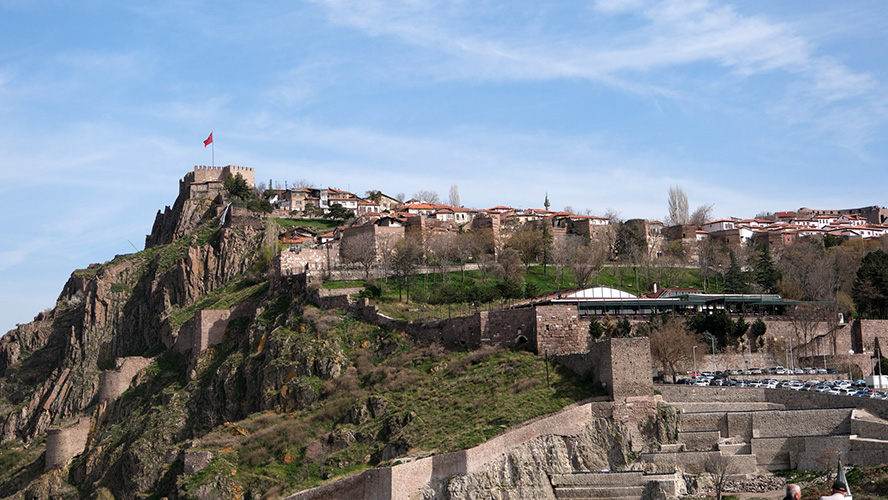
Ankara’s Citadel
Set at the highest point in the city’s historic quarter, Ankara’s ancient citadel is a privileged place to view a 360° panorama. The foundations of the ancient citadel were laid by the Galatians, and the rest was completed by the Romans. Later, the Byzantines and the Seljuks added elements, as well as restoring some parts of the structure. Nowadays, many of the traditional Turkish houses in and around the citadel have been converted into attractive restaurants, music venues, art galleries and craft shops. This is a real city that spreads out from the ancient walls and the surrounding area.
The Mausoleum of Ataturk
Open every day of the year with free admission, Ataturk’s mausoleum is one of the great emblems of modern Turkey. Surrounded by gardens, it is a vast architectural complex, demonstrating the importance of the man considered to be the ‘father of the Turkish nation’. Apart from tourists, Turks themselves visit this place, which was built between 1944 and 1953. In front of the mausoleum stand the Hurriyet Kulesi (Liberty Tower) and the Istiklal Kulesi (Independence Tower), which contain information on the construction of the complex. This great edifice contains personal possessions belonging to Ataturk (1881-1938), including his embalmed dog, his vast personal library, an exhibition on the war of independence, and his tomb.
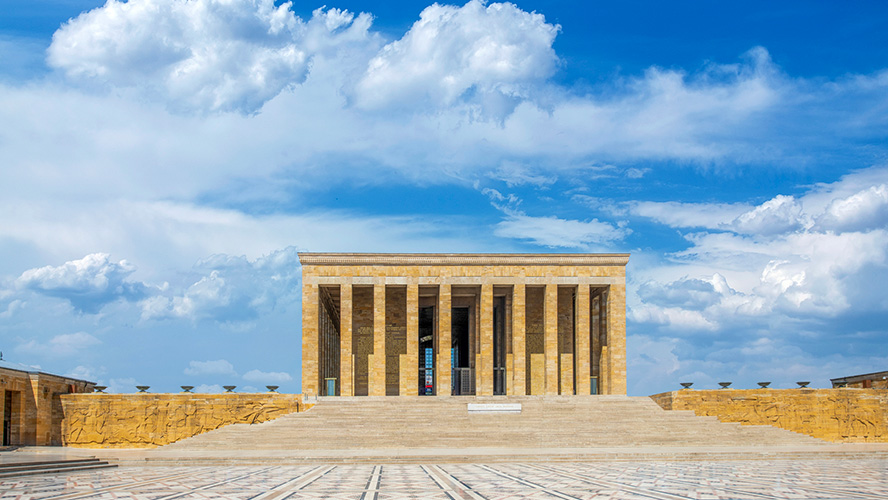
Ankara’s Castle
Ankara’s castle has become one of city’s most popular attractions. It consists of two defensive rings, and was designated a World Heritage Site by UNESCO. To see all of it, we recommend that you start at the top of the castle by enjoying the panoramic views of the lush fields that surround the city. Then, you need to go down through the neighbourhood that surrounds the castle to see the traditional houses with their attractive inner courtyards. Inside the castle, there is a museum that is well worth visiting.
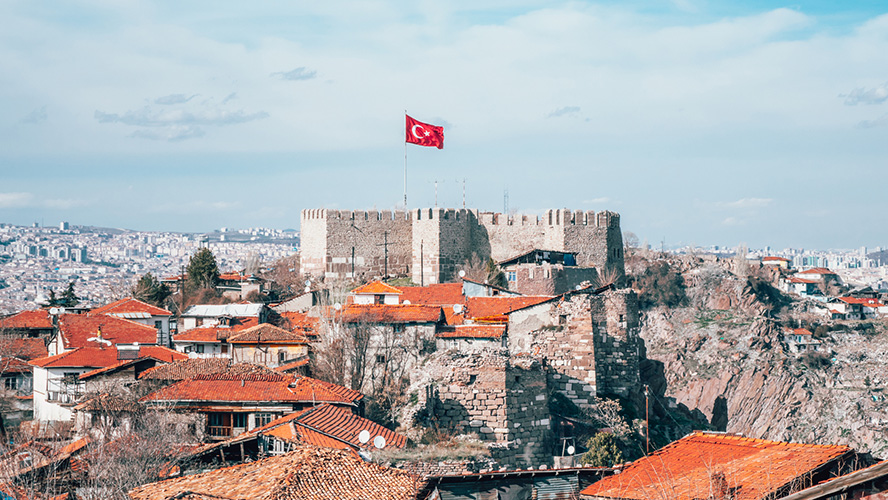
Kizilay
Kizilay is one Ankara’s traditional shopping districts. At the heart of Kizilay is its square, which stretches from the Opera to the Parliament buildings and the districts of Maltepe and Kurtulus. Kizilay began to develop during the early years of the Turkish Republic. It has a large shopping centre, and for a long time it housed the headquarters of the Turkish Red Crescent.
Kocapete Mosque
Kocapete Mosque is Ankara’s biggest mosque. Built between 1967 and 1987, its silhouette can be seen from any point in the city. It can hold up to 24,000 worshippers, and is one of the biggest mosques in the world. It was built in a neo-classical Ottoman style, and its architectural structure was inspired by the mosque of Selim in Edirne, and by the Sehaza and Blue mosques in Istanbul.
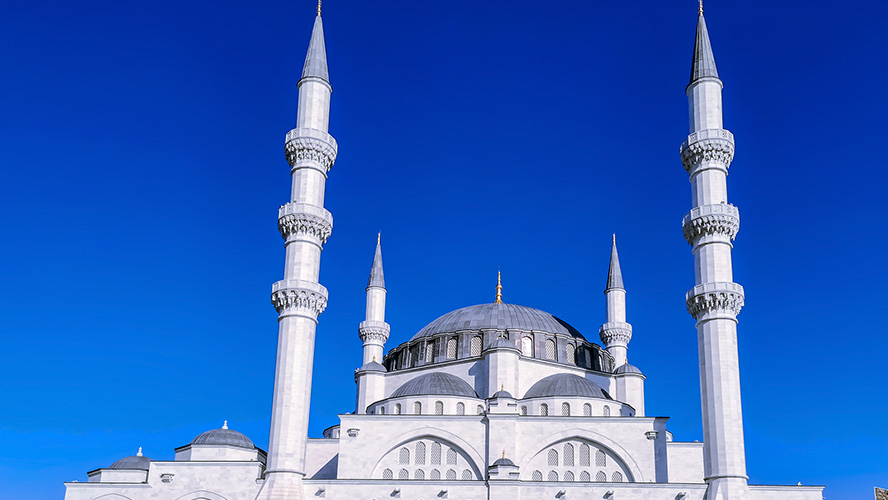
The Atakule Tower
This is a 125-metre-tall observation and telecommunications tower in Çankaya, a district in the Province of Ankara. Set on a hilltop, it can be seen from any point in the city, particularly on a clear day. Inside the tower there is a revolving restaurant, curiously called Sevilla, which can turn a full 360° in just an hour. Inside the tower is a shopping centre. The tower opened in 1989.
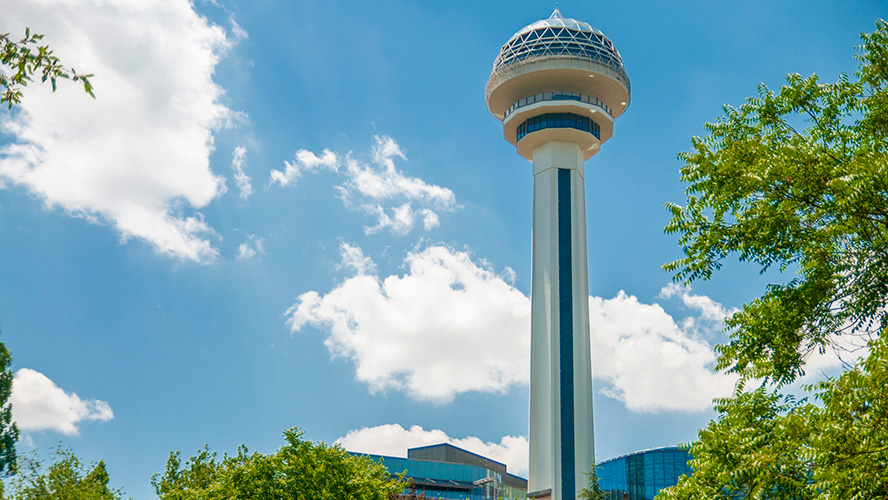
The city’s museums
Ankara has lots of museums with fascinating collections well worth discovering. The city’s most important museum is the Museum of Anatolian Civilisations, which brings together the remains of Turkey’s major archaeological sites and enables visitors to discover the country’s ancient history. It is also worth visiting the Ethnographic Museum to see its rich collections of folk art from the Seljuk period, and the Museum of Modern Art which bears testimony to the development of art in the country from the late nineteenth century to the present day. Nor should we forget the Roman Baths, built by the Emperor Caracalla in the third century, nor the Temple of Augustus and Rome, which dates from the second century B.C.
Where to eat
As a big city, Ankara offers a very wide range of traditional Turkish cuisine. Don’t forget to try the typical dishes, such as Ankara bread, prepared with meat, onion and pepper, Tamtak Tiridi, a particularly flavourful soup which is especially welcome during the winter months, and the vine leaves stuffed with beypazari and cooked in the oven. Famous restaurants include Nukteli, L’avare Satage & Street, Trilye, Kebap 49, Duveroglu, Meyhane Asina, and Masabasi Kebapcisi.









































































